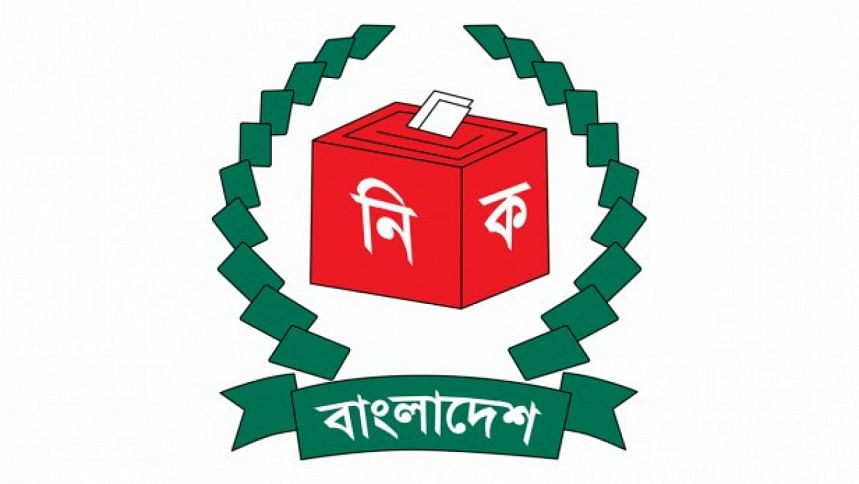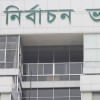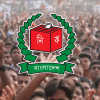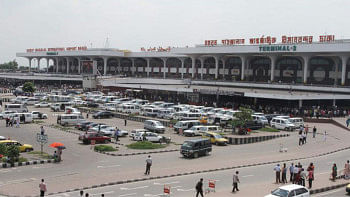EC lists 39 constituencies for redrawing

The Election Commission yesterday published a draft list of 39 constituencies in 14 districts, including Dhaka, for delimitation.
While publishing the primary list, the EC in a notification said that anyone with objections or comments can file appeals to the commission till August 10.
The constituencies are Dhaka 2, 3, 7, 10, 14 and 19; Panchagarh 1 and 2; Rangpur 3, Sirajganj 1, Sirajganj 2, Satkhira 3, Satkhira 4, Shariatpur 2 and 3; Gazipur 1,2,3,5 and 6; Narayanganj 3, 4, and 5; Sylhet 1 and 3; Brahmanbaria 2 and 3; Cumilla 1, 2, 10 and 11; Noakhali 1, 2, 4, and 5; and Chattogram 7 and 8.
According to the delimitation of constituencies law, the boundaries of Jatiya Sangsad constituencies should be redrawn based on the population distribution from the latest census, while keeping administrative units intact for convenience.
The EC publishes a preliminary list of redrawn constituencies, and voters are given the chance to file appeals against the proposed boundaries. The commission can finalise the demarcation only after resolving the objections.
Speaking to reporters at the EC office yesterday, Election Commissioner Anwarul Islam Sarkar said about 1,500 applications were submitted to the EC regarding the re-demarcation of constituencies.
To facilitate the boundary redrawing process, the EC formed a seven-member expert technical committee on July 16, which has already proposed minor and major adjustments in several constituencies.
The EC notification said that while preparing the draft, they kept three seats in three hill tract districts, and the number of seats in districts with two constituencies unchanged.
They have prioritised keeping Upazila/Thana units as intact as possible; limiting the number of voters in difference among the constituencies to a maximum of 30 percent.
The EC is yet to announce the timeline for the next election but has been preparing in line with the chief adviser's announced timeline.
At a meeting on Saturday, Prof Yunus assured political parties that the election date would be announced within four to five days, meeting sources said.
On July 9, Yunus ordered the authorities concerned to complete all polls preparations by December.
The polls are likely to take place in February or April, he told an earlier meeting with law enforcers.
On June 13, Yunus said the election could be held the week before Ramadan 2026 if all preparations are completed by then.
He made the remarks during a meeting in London with BNP acting chairperson Tarique Rahman, who suggested holding the polls before the month of fasting, which will begin in the third week of February.
EC officials emphasised that the demarcation of parliamentary seats is a complex and technical task, often leading to controversy.
During the process, some constituencies become larger, while others shrink. This results in some parliamentary candidates needing to appeal to new voters, while others lose voters.
The last commission, led by Kazi Habibul Awal, re-demarcated 10 constituencies ahead of the 12th national polls.
Prior to that, the KM Nurul Huda-led commission altered the boundaries of 25 constituencies in 2018. The commission under Kazi Rakibuddin Ahmad redrew the boundaries of 87 constituencies in 2013, ahead of the 10th general election, while the ATM Shamsul Huda-led commission made significant changes to 133 constituencies in 2008.
However, following the fall of the Sheikh Hasina-led government, the EC has received objections regarding the 2008 and 2024 demarcation processes.
Transparency International Bangladesh, in a report published in May last year, stated that 198 constituencies had been re-demarcated in the January-2024 election, which caused political controversy, lawsuits, and legal complications.
Internationally recognised guidelines suggest that electoral boundaries should be demarcated with an average population difference of no more than five percent.
However, in Bangladesh, the population deviation ranges between 26 and 88 percent. As a result, some constituencies have MPs representing large populations (over 8 lakh), while others, even in the same district, represent smaller populations (around 3 lakh), according to the TIB report.
The report also noted that this population gap creates complications in electoral expenditure and other activities on a constituency-by-constituency basis.

 For all latest news, follow The Daily Star's Google News channel.
For all latest news, follow The Daily Star's Google News channel. 








Comments